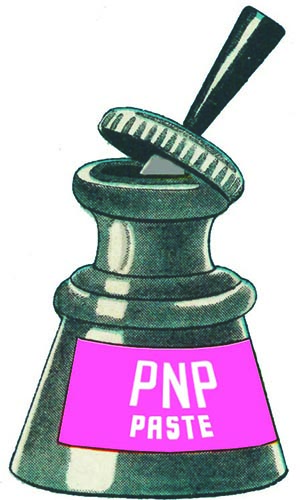Congratulations on your purchase of our special commemorative edition broadsheet newspaper. In order to obtain the fullest degree of enjoyment from your media experience, the following instructions are provided. It is hoped that this will allow you to relive the days when the purchase and use of a broadsheet was part of the daily ritual of many urban commuters.
Upon purchase of your broadsheet, key articles will be highlighted on the upper visible surface of the publication. The space “above the fold” can be guaranteed to inform you instantly of such momentous events as a royal wedding, pending invasion, Australian sporting triumph or national crisis without the need for further interaction. The folded format allows the publication to be conveniently tucked under the arm between the newsstand and your conveyance.
Once seated, grasp the broadsheet firmly at either side, being sure to hold all sections, and allow the folded portions to drop so that the entire front surface may now be scanned, raising the hands as required.
The next stage, or “opening”, may seem daunting, especially to those readers who are too young to have personal experience of the operation. Do not be discouraged by the once-common misconception that tabloids were more convenient to read on the train or omnibus than broadsheets. Firstly, select the page at which you wish to commence reading from the index provided on the lower portion of the front surface—“folding back” the top left hand corner to obtain a preview is perfectly acceptable. Leaving your right hand in position, grasp the pages preceding the chosen location with your left, and gently work them from beneath your right thumb. Now, ensuring that you have not loosened your grip on the broadsheet’s rear sections, open the pages in a single smooth movement. A brisk decisiveness is of the essence: any hesitation may result in a calamitous tangle. The confident “popping” of the broadsheet is considered by many to be the essence of the reading experience. Remember to apologise to any fellow passengers whose spectacles or headphones you may have jostled in the process.
Reading every page of the broadsheet is unnecessary and impractical for all but the longest commutes. Let hierarchy and organisation be your watchwords: the broadsheet reader was presumed to be able to navigate successfully to only those sections of personal relevance. It is customary, of course, to end one’s journey through the first section at the letters page.
You may, if interested, perform the same manipulations on the business section. The hybrid tabloid section of the early 21st century is regarded as a late aberration and has not been reproduced in today’s sample.
Upon reaching the weather, one may bring the broadsheet to its final configuration: fold the left facing page around to the back, and then, bending at the fold half-way down the page, raise the lower half of the entire publication behind. This provides a firm writing surface upon which you may then do the crossword. (Note: readers are advised not to attempt the facsimile ‘cryptic’ crossword, which is included for historical accuracy. The exact nature of these artefacts is the subject of scholarly debate and it is suspected that they are not, in fact, puzzles, but a form of convoluted and obscure parody, the point of which is now unfathomable.)
Mike Lynch works in IT support at the University of Technology, Sydney, and lives in Dulwich Hill with his three daughters. Find him on Twitter @bombinans and @FSVO or online at Nannygoat Hill.
This article originally appeared in Materiality: BOOK, now out of print. To purchase an e-version, please visit our shop.
